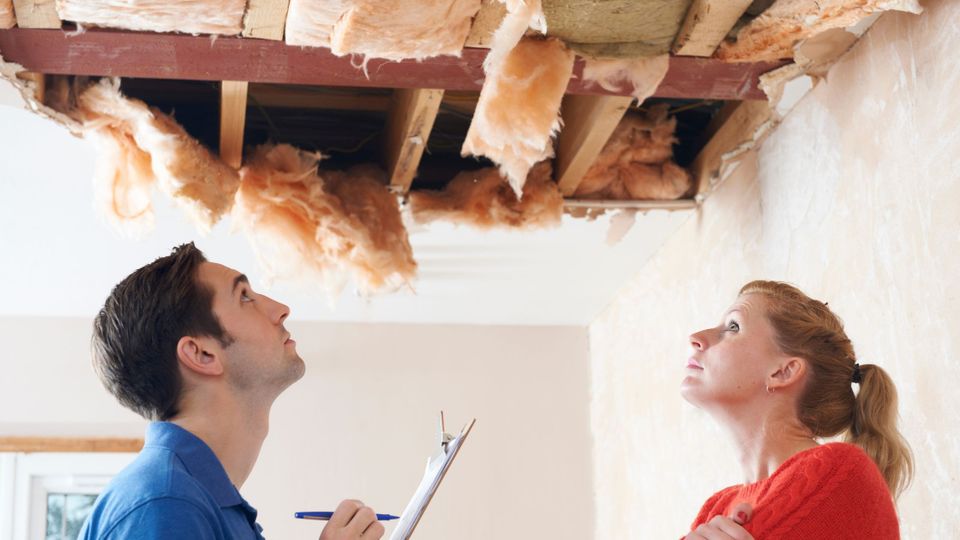

Fox Valley homeowners face constant challenges from Wisconsin's severe weather conditions that can create roof leak problems throughout the year. A roof leak represents one of the most urgent home maintenance issues, capable of causing extensive water damage to ceilings, walls, insulation, and floors if left unaddressed. Understanding how to identify leak sources and implement effective repairs protects your home's structural integrity while preventing costly secondary damage.
The complexity of roof leak detection stems from water's ability to travel along unexpected paths before appearing as visible damage inside your house. Water runs from the initial entry point along rafters, through insulation, and around obstacles before finally dripping into living spaces. This migration pattern means the visible leak location rarely indicates the actual roof penetration point, requiring systematic investigation to identify the true problem area.
Early detection and prompt repair prevent minor roof issues from escalating into major structural problems. Moisture infiltration creates a breeding ground for mold growth that threatens both building materials and indoor air quality. Professional assessment ensures comprehensive leak identification while preventing recurring problems that plague inadequate repair attempts.
The complexity of roof leak detection stems from water's ability to travel along unexpected paths before appearing as visible damage inside your house. Water runs from the initial entry point along rafters, through insulation, and around obstacles before finally dripping into living spaces. This migration pattern means the visible leak location rarely indicates the actual roof penetration point, requiring systematic investigation to identify the true problem area.
Early detection and prompt repair prevent minor roof issues from escalating into major structural problems. Moisture infiltration creates a breeding ground for mold growth that threatens both building materials and indoor air quality. Professional assessment ensures comprehensive leak identification while preventing recurring problems that plague inadequate repair attempts.
Understanding Roof Leak Origins and Patterns

Roof leak sources vary significantly based on roof age, design complexity, and maintenance history. Common leak entry points include damaged shingles, damaged flashing around chimneys and vents, and clogged gutters that cause water backup. Understanding these vulnerability patterns helps homeowners focus inspection efforts on high-risk areas where leaks most commonly develop.
Weather conditions significantly influence leak severity and detection timing. Heavy rain reveals active leaks immediately, while light precipitation may only cause gradual moisture accumulation that appears days later. Winter conditions create ice dams that force water under shingles in ways that normal rainfall cannot duplicate. These seasonal variations require year-round vigilance for leak detection.
Older roofs develop leak patterns related to material deterioration and fastener failure over time. Roofing nails work loose through thermal cycling, creating penetration points for water entry. Missing shingles from wind damage expose underlying materials to direct water contact. These age-related vulnerabilities require different repair approaches than damage from specific weather events.
The roof's structure influences water flow patterns that determine where leaks appear inside the house. Water pooling in low areas creates persistent moisture problems even after surface repairs. Proper drainage design prevents these accumulation issues, but existing homes may require modifications to address problematic water flow patterns.
Quick tip: Check your attic during heavy rain with a flashlight to spot active leaks before they cause ceiling damage. Look for wet insulation, water stains on rafters, or actual dripping to pinpoint leak sources.
Weather conditions significantly influence leak severity and detection timing. Heavy rain reveals active leaks immediately, while light precipitation may only cause gradual moisture accumulation that appears days later. Winter conditions create ice dams that force water under shingles in ways that normal rainfall cannot duplicate. These seasonal variations require year-round vigilance for leak detection.
Older roofs develop leak patterns related to material deterioration and fastener failure over time. Roofing nails work loose through thermal cycling, creating penetration points for water entry. Missing shingles from wind damage expose underlying materials to direct water contact. These age-related vulnerabilities require different repair approaches than damage from specific weather events.
The roof's structure influences water flow patterns that determine where leaks appear inside the house. Water pooling in low areas creates persistent moisture problems even after surface repairs. Proper drainage design prevents these accumulation issues, but existing homes may require modifications to address problematic water flow patterns.
Quick tip: Check your attic during heavy rain with a flashlight to spot active leaks before they cause ceiling damage. Look for wet insulation, water stains on rafters, or actual dripping to pinpoint leak sources.
Leaky Roof Detection Strategies
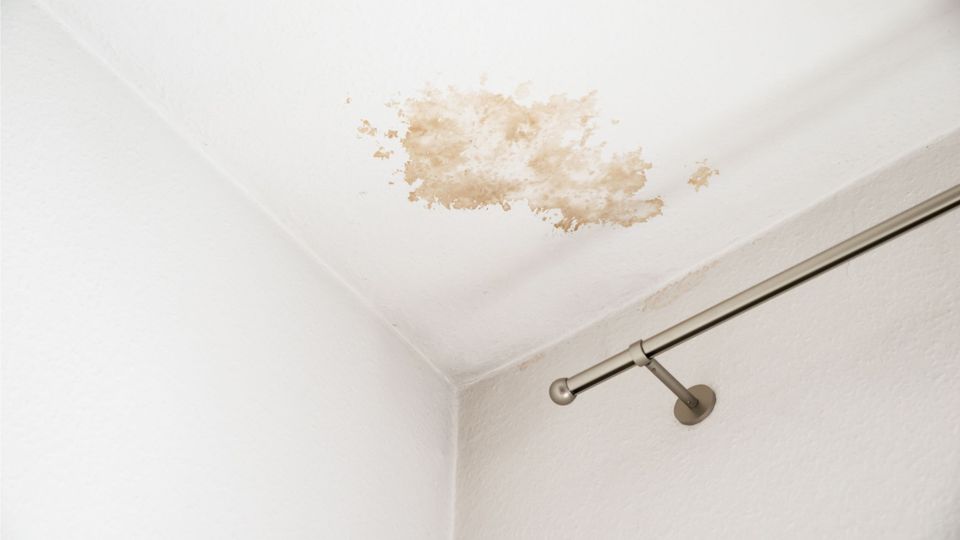
Leaky roof identification requires systematic inspection of both interior and exterior surfaces to trace water paths from source to symptom. Interior inspection focuses on water stains, ceiling discoloration, and wall moisture that indicate leak presence. These visible signs often appear in different locations than the actual roof penetration, requiring careful investigation to connect symptoms with sources.
Attic inspection provides the most direct access to leak evidence without weather dependency. Wet insulation clearly indicates recent water infiltration, while stains on rafters show historical leak patterns. Moisture meters help identify damp areas that may not show obvious visual evidence of water infiltration.
Exterior inspection identifies potential leak sources including damaged area conditions around roof penetrations. Step flashing failures around chimneys and walls create common leak points that require specific repair techniques. Satellite dishes, vents, and other roof-mounted equipment create penetration points that demand careful sealing and maintenance.
Professional roofing company inspection provides expertise in leak detection that homeowners often cannot achieve independently. Experienced roofers understand water flow patterns and can identify subtle damage indicators that suggest developing leak problems. This professional assessment proves valuable for complex leak situations or when initial repair attempts fail to resolve problems.
Did you know? Water can travel up to 20 feet horizontally from the actual leak source before appearing as interior damage. This migration pattern explains why ceiling stains rarely indicate the precise roof penetration location.
Attic inspection provides the most direct access to leak evidence without weather dependency. Wet insulation clearly indicates recent water infiltration, while stains on rafters show historical leak patterns. Moisture meters help identify damp areas that may not show obvious visual evidence of water infiltration.
Exterior inspection identifies potential leak sources including damaged area conditions around roof penetrations. Step flashing failures around chimneys and walls create common leak points that require specific repair techniques. Satellite dishes, vents, and other roof-mounted equipment create penetration points that demand careful sealing and maintenance.
Professional roofing company inspection provides expertise in leak detection that homeowners often cannot achieve independently. Experienced roofers understand water flow patterns and can identify subtle damage indicators that suggest developing leak problems. This professional assessment proves valuable for complex leak situations or when initial repair attempts fail to resolve problems.
Did you know? Water can travel up to 20 feet horizontally from the actual leak source before appearing as interior damage. This migration pattern explains why ceiling stains rarely indicate the precise roof penetration location.
Leaking Roof Emergency Response
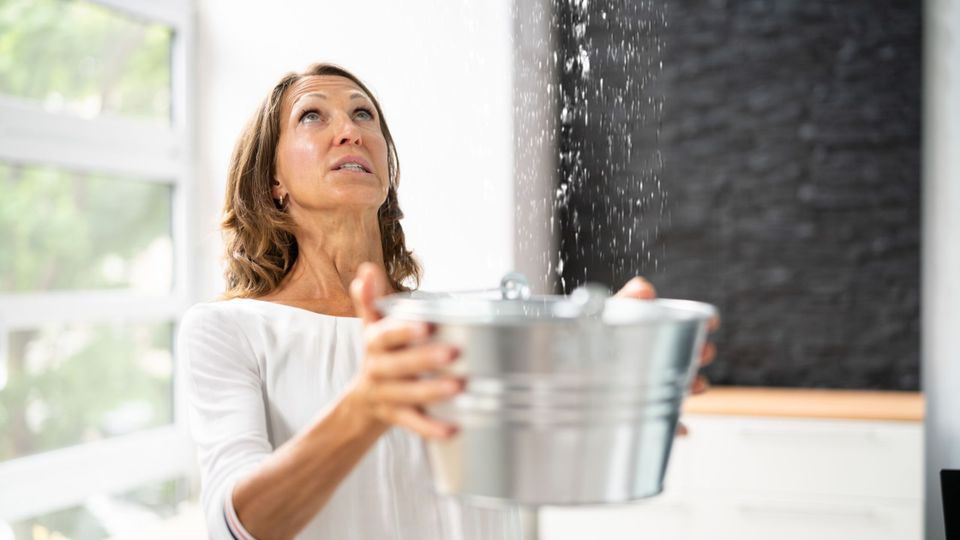
Leaking roof emergencies require immediate action to minimize water damage while arranging permanent repairs. Temporary measures include placing garbage cans or buckets to collect dripping water and moving furniture away from affected areas. These stopgap solutions prevent immediate damage while providing time for professional assessment and repair planning.
Roof sealant provides temporary leak stopping for small holes or crack repairs during emergency situations. However, these temporary fixes should not replace proper repair methods once weather conditions permit comprehensive work. Emergency repairs focus on stopping water entry rather than addressing underlying damage causes.
Ceiling protection becomes critical when leaks threaten drywall or other interior finishes. Plastic sheeting can divert water flow toward collection containers while preventing additional surface damage. However, trapped moisture behind plastic can create condensation problems that require ventilation considerations.
Documentation of emergency conditions supports insurance claims while providing repair contractors with damage extent information. Photographs of water stains, damaged areas, and temporary protective measures create valuable records for claim processing and repair planning.
Dangerous conditions develop quickly when water infiltrates electrical systems or creates slip hazards on floors. Water pressure from significant leaks can cause ceiling collapse without warning. Homeowners should avoid areas directly below active leaks until professional assessment confirms structural safety.
Electrical hazards require immediate attention when water contacts wiring, outlets, or fixtures. Shutting off electrical circuits to affected areas prevents shock risks and potential fire hazards. Professional electrical inspection may be necessary before restoring power to water-damaged areas.
Roof sealant provides temporary leak stopping for small holes or crack repairs during emergency situations. However, these temporary fixes should not replace proper repair methods once weather conditions permit comprehensive work. Emergency repairs focus on stopping water entry rather than addressing underlying damage causes.
Ceiling protection becomes critical when leaks threaten drywall or other interior finishes. Plastic sheeting can divert water flow toward collection containers while preventing additional surface damage. However, trapped moisture behind plastic can create condensation problems that require ventilation considerations.
Documentation of emergency conditions supports insurance claims while providing repair contractors with damage extent information. Photographs of water stains, damaged areas, and temporary protective measures create valuable records for claim processing and repair planning.
Safety Considerations During Leak Response
Dangerous conditions develop quickly when water infiltrates electrical systems or creates slip hazards on floors. Water pressure from significant leaks can cause ceiling collapse without warning. Homeowners should avoid areas directly below active leaks until professional assessment confirms structural safety.Electrical hazards require immediate attention when water contacts wiring, outlets, or fixtures. Shutting off electrical circuits to affected areas prevents shock risks and potential fire hazards. Professional electrical inspection may be necessary before restoring power to water-damaged areas.
Professional Roofing Company Selection
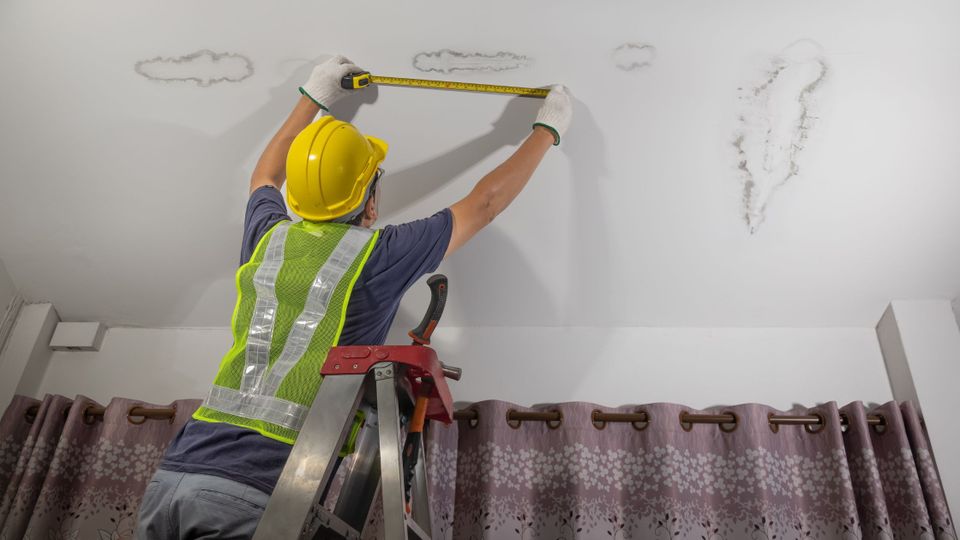
Professional roofing company selection significantly affects repair quality and long-term leak prevention success. Experienced contractors understand leak investigation techniques and repair methods that address root causes rather than just visible symptoms. This expertise prevents recurring problems that plague inadequate repair attempts.
Contractor licensing and insurance verification protects homeowners from liability issues during repair work. Reputable companies maintain current licensing and comprehensive insurance coverage that demonstrates their commitment to professional standards. These credentials provide important protection for homeowners during repair projects.
Reference checking and local reputation research help identify contractors with proven track records for leak repair success. Local contractors understand regional weather patterns and common leak issues specific to Fox Valley conditions. This local knowledge proves valuable for implementing repairs that withstand local climate challenges.
Warranty coverage for leak repairs provides important protection against recurring problems. Professional roofing companies typically offer warranties that cover both materials and workmanship for specified periods. Understanding warranty terms and coverage helps homeowners make informed contractor selection decisions.
Repair estimate evaluation should focus on thoroughness and root cause addressing rather than just lowest cost options. Comprehensive estimates identify all necessary work including related damage repairs and preventive measures. These detailed approaches prevent surprise costs and ensure complete problem resolution.
Material specifications affect both repair durability and warranty coverage. Quality materials typically offer superior performance and longer service life than economy alternatives. Professional contractors recommend materials appropriate for specific applications and local climate conditions.
Contractor licensing and insurance verification protects homeowners from liability issues during repair work. Reputable companies maintain current licensing and comprehensive insurance coverage that demonstrates their commitment to professional standards. These credentials provide important protection for homeowners during repair projects.
Reference checking and local reputation research help identify contractors with proven track records for leak repair success. Local contractors understand regional weather patterns and common leak issues specific to Fox Valley conditions. This local knowledge proves valuable for implementing repairs that withstand local climate challenges.
Warranty coverage for leak repairs provides important protection against recurring problems. Professional roofing companies typically offer warranties that cover both materials and workmanship for specified periods. Understanding warranty terms and coverage helps homeowners make informed contractor selection decisions.
Repair Estimate Evaluation
Repair estimate evaluation should focus on thoroughness and root cause addressing rather than just lowest cost options. Comprehensive estimates identify all necessary work including related damage repairs and preventive measures. These detailed approaches prevent surprise costs and ensure complete problem resolution.Material specifications affect both repair durability and warranty coverage. Quality materials typically offer superior performance and longer service life than economy alternatives. Professional contractors recommend materials appropriate for specific applications and local climate conditions.
Insurance Agent Consultation and Claims

Insurance agent consultation helps homeowners understand coverage for roof leak damage and repair costs. Most homeowners insurance policies cover sudden leak damage but may exclude gradual deterioration or maintenance-related issues. Understanding these distinctions helps determine when to file claims versus paying for repairs independently.
Claim documentation requires thorough evidence of damage extent and causation. Professional assessment and repair estimates support claim processing while demonstrating damage severity. Prompt claim filing prevents coverage disputes related to damage timing or extent questions.
Coverage limitations may affect repair approaches and material selection during claim-covered repairs. Some policies require specific contractor selection or repair methods to maintain coverage. Understanding these requirements prevents coverage issues during repair execution.
Deductible considerations affect the cost-benefit analysis for filing claims versus self-paying for repairs. Small leak repairs may cost less than policy deductibles, making claim filing unnecessary. However, related water damage costs may justify claim filing even for minor leak repairs.
Claim documentation requires thorough evidence of damage extent and causation. Professional assessment and repair estimates support claim processing while demonstrating damage severity. Prompt claim filing prevents coverage disputes related to damage timing or extent questions.
Coverage limitations may affect repair approaches and material selection during claim-covered repairs. Some policies require specific contractor selection or repair methods to maintain coverage. Understanding these requirements prevents coverage issues during repair execution.
Deductible considerations affect the cost-benefit analysis for filing claims versus self-paying for repairs. Small leak repairs may cost less than policy deductibles, making claim filing unnecessary. However, related water damage costs may justify claim filing even for minor leak repairs.
Water Pressure and Drainage Issues
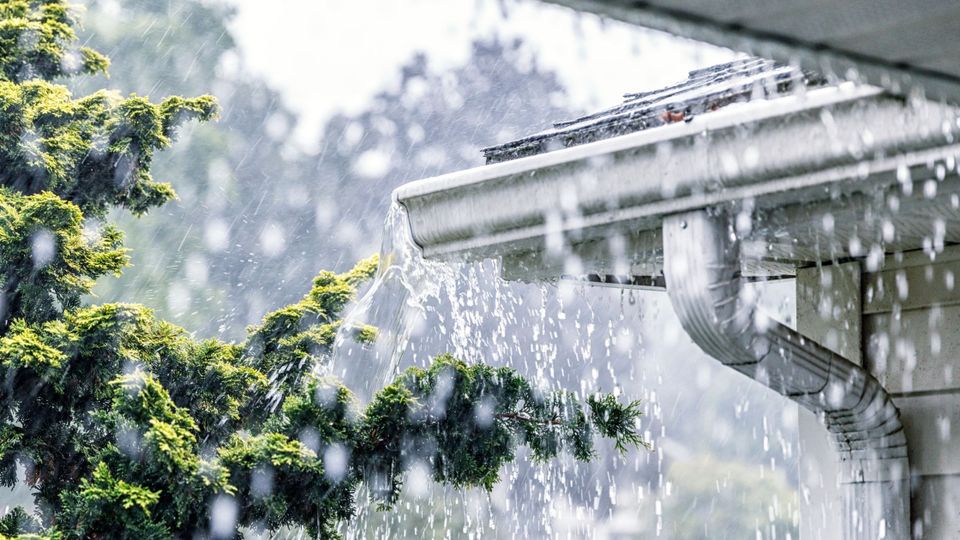
Water pressure problems often contribute to leak development by forcing water into areas where normal rainfall cannot penetrate. Ice dams create artificial water pressure that drives moisture under shingles designed only for gravity-fed drainage. Understanding these pressure dynamics helps identify repair strategies that address causation rather than just symptoms.
Clogged gutters create water backup that increases pressure against roof edges and fascia boards. This backup forces water into areas where shingles overlap, creating leak entry points. Regular gutter maintenance prevents these pressure-related leak problems while protecting roof edge integrity.
Proper drainage design ensures water flows away from the house foundation and roof edges where leaks commonly develop. Inadequate drainage creates water pooling that increases leak risk through prolonged moisture contact. Drainage improvements often prove necessary for long-term leak prevention.
Downspout positioning affects water flow patterns around the house foundation. Poor positioning can create exterior wall moisture problems that appear similar to roof leaks. Proper downspout design directs water away from building surfaces while preventing foundation moisture issues.
Gutter system maintenance prevents many leak conditions by ensuring proper water flow away from roof edges. Debris accumulation blocks drainage while adding weight that can damage gutter attachments. Regular cleaning prevents these problems while extending gutter system service life.
Gutter slope verification ensures water flows toward downspouts rather than pooling in low spots. Improper slope creates standing water that promotes corrosion and mosquito breeding. Professional gutter adjustment corrects slope problems while improving drainage performance.
Clogged gutters create water backup that increases pressure against roof edges and fascia boards. This backup forces water into areas where shingles overlap, creating leak entry points. Regular gutter maintenance prevents these pressure-related leak problems while protecting roof edge integrity.
Proper drainage design ensures water flows away from the house foundation and roof edges where leaks commonly develop. Inadequate drainage creates water pooling that increases leak risk through prolonged moisture contact. Drainage improvements often prove necessary for long-term leak prevention.
Downspout positioning affects water flow patterns around the house foundation. Poor positioning can create exterior wall moisture problems that appear similar to roof leaks. Proper downspout design directs water away from building surfaces while preventing foundation moisture issues.
Gutter System Maintenance
Gutter system maintenance prevents many leak conditions by ensuring proper water flow away from roof edges. Debris accumulation blocks drainage while adding weight that can damage gutter attachments. Regular cleaning prevents these problems while extending gutter system service life.Gutter slope verification ensures water flows toward downspouts rather than pooling in low spots. Improper slope creates standing water that promotes corrosion and mosquito breeding. Professional gutter adjustment corrects slope problems while improving drainage performance.
Water Damage Assessment and Remediation
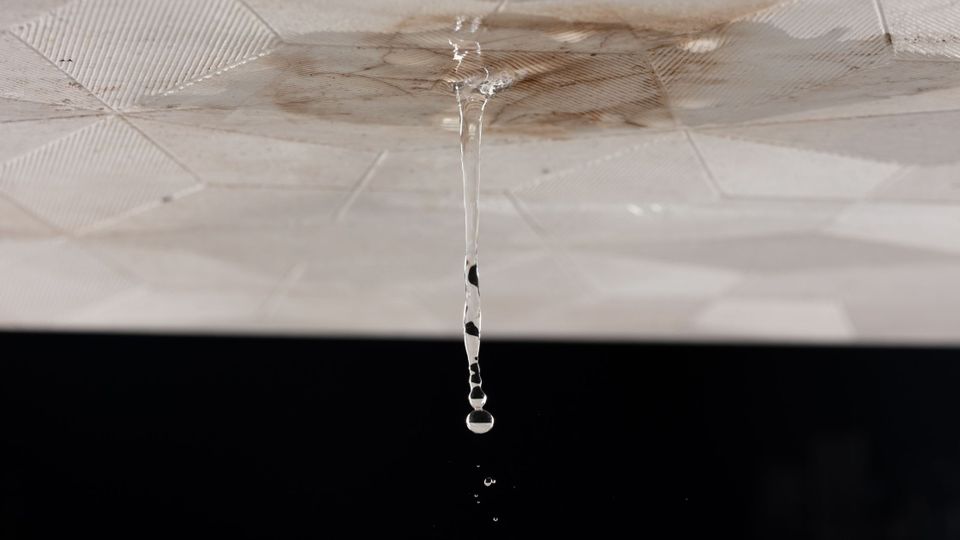
Water damage assessment determines the extent of repairs needed beyond just roof leak stopping. Interior damage to ceilings, walls, and floors often requires specialized restoration techniques. Professional assessment identifies all affected areas while preventing hidden moisture problems that cause future issues.
Insulation replacement becomes necessary when water infiltration saturates attic or wall insulation materials. Wet insulation loses thermal performance while creating conditions for mold growth. Proper insulation replacement restores energy efficiency while preventing moisture-related problems.
Structural damage evaluation identifies compromised building components that require repair or replacement. Prolonged water exposure can weaken rafters, decking, and wall framing materials. Professional structural assessment ensures all damaged components receive appropriate attention during restoration.
Mold prevention requires prompt moisture removal and affected area treatment. Mold growth begins within 24-48 hours of water exposure under favorable conditions. Professional remediation may be necessary for extensive water damage or when mold growth has already begun.
Insulation replacement becomes necessary when water infiltration saturates attic or wall insulation materials. Wet insulation loses thermal performance while creating conditions for mold growth. Proper insulation replacement restores energy efficiency while preventing moisture-related problems.
Structural damage evaluation identifies compromised building components that require repair or replacement. Prolonged water exposure can weaken rafters, decking, and wall framing materials. Professional structural assessment ensures all damaged components receive appropriate attention during restoration.
Mold prevention requires prompt moisture removal and affected area treatment. Mold growth begins within 24-48 hours of water exposure under favorable conditions. Professional remediation may be necessary for extensive water damage or when mold growth has already begun.
Step Flashing Repair and Replacement
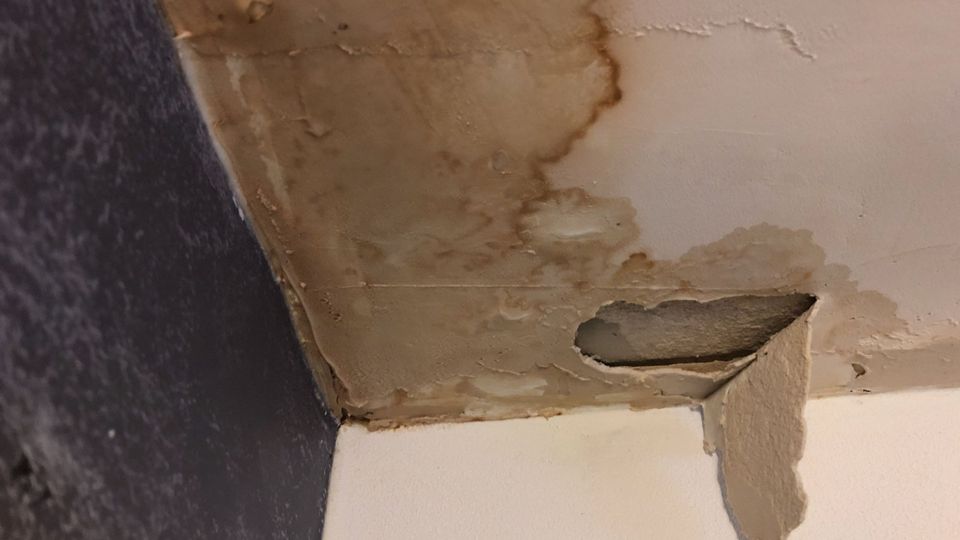
Step flashing failures create common leak sources where roofs meet exterior walls or chimneys. This specialized flashing requires precise installation to direct water away from vulnerable joint areas. Improper step flashing installation or deterioration allows water penetration that appears as interior wall or ceiling leaks.
New flashing installation requires coordination between roofing and wall surface repairs. The flashing must integrate properly with both roofing materials and wall coverings to provide effective water barriers. Professional installation ensures proper overlap and sealing techniques that prevent future leak problems.
Roofing caulk provides temporary sealing around flashing areas but should not replace proper flashing repair. Quality caulk applications can extend flashing service life when applied as part of comprehensive maintenance programs. However, caulk alone cannot correct fundamental flashing design or installation problems.
Chimney flashing represents one of the most complex step flashing applications due to multiple material interfaces and thermal movement considerations. Professional installation techniques account for these challenges while providing durable leak protection. Regular inspection and maintenance prevent minor flashing issues from becoming major leak problems.
Advanced flashing techniques address challenging roof configurations that require specialized approaches. Complex roof lines with multiple valleys, dormers, and architectural features demand expert flashing design and installation. These situations often require custom fabrication and installation techniques beyond standard applications.
Ice dam prevention through proper flashing design helps prevent winter leak problems common in Wisconsin climates. Specialized ice and water barriers provide additional protection in vulnerable areas where ice dams commonly form. These preventive measures prove more effective than reactive repairs after ice dam damage occurs.
New flashing installation requires coordination between roofing and wall surface repairs. The flashing must integrate properly with both roofing materials and wall coverings to provide effective water barriers. Professional installation ensures proper overlap and sealing techniques that prevent future leak problems.
Roofing caulk provides temporary sealing around flashing areas but should not replace proper flashing repair. Quality caulk applications can extend flashing service life when applied as part of comprehensive maintenance programs. However, caulk alone cannot correct fundamental flashing design or installation problems.
Chimney flashing represents one of the most complex step flashing applications due to multiple material interfaces and thermal movement considerations. Professional installation techniques account for these challenges while providing durable leak protection. Regular inspection and maintenance prevent minor flashing issues from becoming major leak problems.
Advanced Flashing Techniques
Advanced flashing techniques address challenging roof configurations that require specialized approaches. Complex roof lines with multiple valleys, dormers, and architectural features demand expert flashing design and installation. These situations often require custom fabrication and installation techniques beyond standard applications.Ice dam prevention through proper flashing design helps prevent winter leak problems common in Wisconsin climates. Specialized ice and water barriers provide additional protection in vulnerable areas where ice dams commonly form. These preventive measures prove more effective than reactive repairs after ice dam damage occurs.
Preventive Maintenance and Long-term Solutions
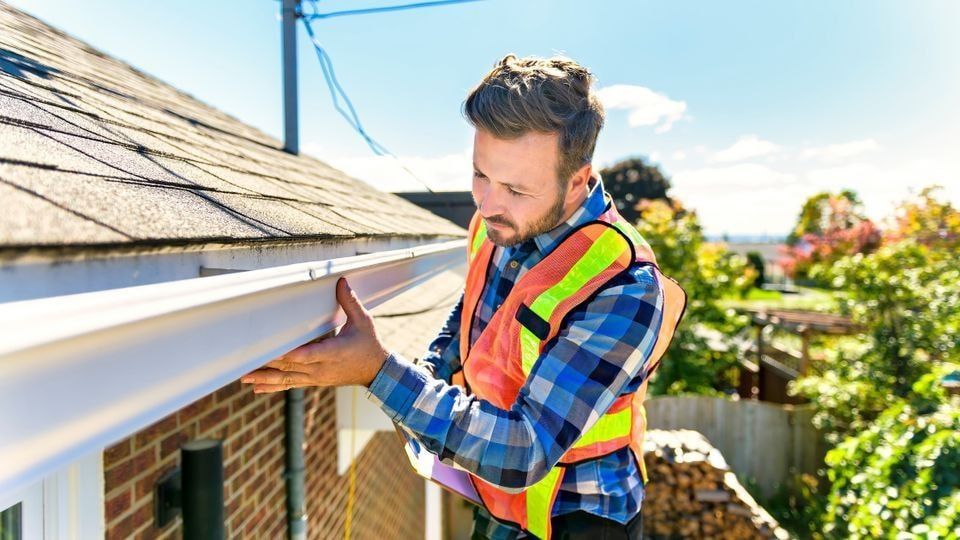
Preventive maintenance programs significantly reduce roof leak frequency while extending overall roof service life. Regular inspection schedules help identify developing problems before they cause interior damage. Professional maintenance includes cleaning, minor repairs, and protective treatments that maintain roof integrity.
New roof installation provides the most comprehensive solution for roofs with multiple leak sources or extensive deterioration. Modern roofing materials and installation techniques offer superior leak resistance compared to older systems. Investment in quality installation prevents recurring leak problems while improving energy efficiency.
Roof replacement timing depends on repair frequency, age, and overall condition rather than just leak severity. Multiple repair areas often indicate systematic deterioration that makes replacement more cost-effective than continued repairs. Professional assessment helps determine optimal timing for replacement decisions.
Understanding roof anatomy and components helps homeowners identify maintenance needs and communicate effectively with contractors. Knowledge of roof systems enables better decision-making about repairs and improvements.
For comprehensive information about protecting your roof from weather damage, explore our detailed guide on wind damage prevention and repair which covers storm preparation and damage assessment strategies.
According to the National Roofing Contractors Association, proper roof maintenance can extend roof life by 30-50% while reducing emergency repair costs by up to 60%. This significant benefit justifies regular investment in professional maintenance services.
New roof installation provides the most comprehensive solution for roofs with multiple leak sources or extensive deterioration. Modern roofing materials and installation techniques offer superior leak resistance compared to older systems. Investment in quality installation prevents recurring leak problems while improving energy efficiency.
Roof replacement timing depends on repair frequency, age, and overall condition rather than just leak severity. Multiple repair areas often indicate systematic deterioration that makes replacement more cost-effective than continued repairs. Professional assessment helps determine optimal timing for replacement decisions.
Understanding roof anatomy and components helps homeowners identify maintenance needs and communicate effectively with contractors. Knowledge of roof systems enables better decision-making about repairs and improvements.
For comprehensive information about protecting your roof from weather damage, explore our detailed guide on wind damage prevention and repair which covers storm preparation and damage assessment strategies.
According to the National Roofing Contractors Association, proper roof maintenance can extend roof life by 30-50% while reducing emergency repair costs by up to 60%. This significant benefit justifies regular investment in professional maintenance services.
Frequently Asked Questions
How do I find the source of a roof leak?
Start by examining the attic during heavy rain to identify active leaks. Look for wet insulation, water stains on rafters, or visible dripping. Remember that water can travel significant distances from the actual leak source before appearing as interior damage.
When should I call a professional roofer for leak repairs?
Contact a professional roofer immediately for leaks affecting large areas, multiple locations, or when initial repair attempts fail. Also call professionals for flashing repairs, structural damage concerns, or when you cannot safely access the leak source.
Can I fix a small roof leak myself?
Small leaks from loose shingles or minor flashing issues may be repairable with roofing caulk or sealant as temporary measures. However, permanent repairs often require professional installation techniques to prevent recurring problems. Safety considerations also favor professional repair for most situations.
How much does roof leak repair typically cost?
Repair costs vary significantly based on leak source, accessibility, and damage extent. Simple shingle repairs may cost a few hundred dollars, while complex flashing or structural repairs can exceed several thousand dollars. Professional assessment provides accurate cost estimates for specific situations.
Will my insurance cover roof damage?
Most homeowners insurance policies cover sudden leak damage but exclude gradual deterioration or maintenance issues. Coverage depends on leak causation and damage timing. Consult your insurance agent about specific coverage questions and claim filing procedures.
How can I prevent roof leaks?
Regular professional inspections identify developing problems before they cause leaks. Maintain gutters, trim overhanging branches, and address minor damage promptly. Quality installation and materials during roof replacement provide the best long-term leak prevention.
Comprehensive Leak Management Strategy
Effective roof leak management requires understanding detection methods, implementing prompt repairs, and maintaining preventive care programs that protect your home's structural integrity. Professional guidance ensures optimal leak resolution while preventing recurring problems that compromise your family's safety and comfort throughout Wisconsin's challenging weather conditions.
